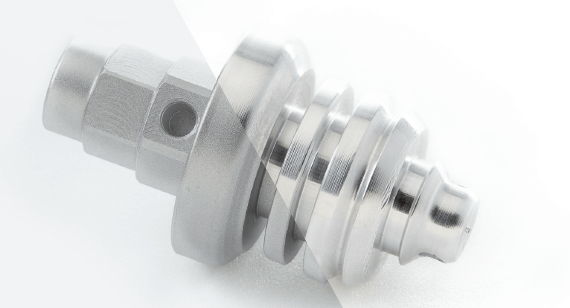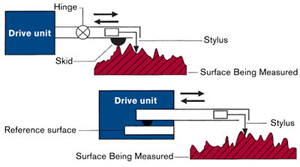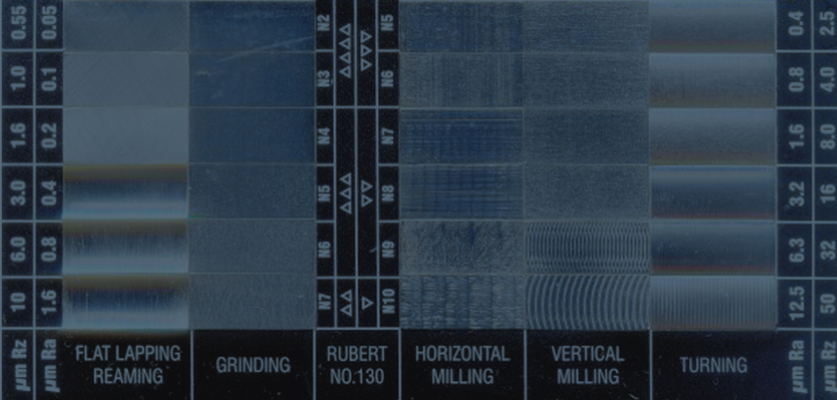Table of Contents
Are you tired of rough and uneven finishes on your metal lathe projects? Achieving a smooth finish on a metal lathe can seem like a daunting task, but with the right techniques, it can be easily achieved. In this article, we will explore some tips and tricks to help you get a smooth finish on your metal lathe projects. Whether you’re a beginner or an experienced machinist, these tips will help you improve the quality of your work and create professional-looking finishes every time.
- Choose the right cutting tool for the job.
- Set the lathe to the correct speed for the material you are cutting.
- Use a cutting fluid to lubricate the tool and prevent overheating.
- Take light cuts with the tool, gradually increasing the depth of cut while maintaining a consistent speed.
- Use a fine-grit sandpaper or emery cloth to polish the surface of the metal once the desired shape has been achieved.
How to Get a Smooth Finish on a Metal Lathe: Tips and Tricks
1. Choose the Right Cutting Tool
When it comes to getting a smooth finish on a metal lathe, choosing the right cutting tool is essential. The tool should be sharp, with a high-speed steel (HSS) tip, and the right geometry for the job. For instance, if you’re cutting a groove, you’ll need a tool with a pointed tip. On the other hand, if you’re facing a surface, you’ll need a tool with a flat tip.
In addition, make sure you’re using the right cutting speed and feed rate for the material you’re working with. A slow cutting speed and a low feed rate can cause the tool to chatter, leaving a rough finish.
2. Use the Right Lubricant
Using the right lubricant can help you get a smoother finish on your metal lathe. Lubricants help reduce friction between the cutting tool and the workpiece, which can prevent heat buildup and reduce wear on the tool.
For most metals, a cutting oil is recommended. This can be either a petroleum-based oil or a water-soluble oil. Some types of metals, such as aluminum, require a specific type of cutting oil.
3. Check Your Lathe’s Alignment
If your metal lathe isn’t properly aligned, you’ll have a hard time getting a smooth finish. Check the alignment of your lathe’s bed, tailstock, and carriage regularly to make sure everything is lined up correctly.
If you find that your lathe is out of alignment, you’ll need to adjust it. This may involve adjusting the gibs, adjusting the tailstock, or making other adjustments as needed.
4. Use the Right Cutting Technique
Using the right cutting technique can also help you get a smooth finish on your metal lathe. When you’re cutting, make sure you’re taking light cuts and using a consistent feed rate.
Additionally, make sure you’re using the right tool for the job. For instance, if you’re cutting a groove, you’ll need to use a parting tool. If you’re facing a surface, you’ll need to use a facing tool.
5. Keep Your Workpiece Clean
Keeping your workpiece clean can help you get a smoother finish on your metal lathe. Dirt and debris can get in the way of your cutting tool, causing it to chatter and leaving a rough finish.
Use a clean rag or a brush to remove any dirt, debris, or oil from your workpiece before you start cutting.
6. Use a Backing Material
Using a backing material can help you get a smoother finish on your metal lathe. This is particularly useful when you’re working with thin or flexible materials that can vibrate or chatter during cutting.
A backing material can help support your workpiece and reduce vibration, resulting in a smoother finish.
7. Check Your Tool’s Condition
Regularly checking your cutting tool’s condition is important for getting a smooth finish on your metal lathe. A dull or damaged tool can cause chatter and leave a rough finish.
Inspect your tool regularly for signs of wear, such as chips or cracks. Replace the tool as needed to ensure you’re getting the best results.
8. Use the Right Coolant
Using the right coolant can also help you get a smoother finish on your metal lathe. Coolants help reduce heat buildup and prevent the workpiece from warping or distorting during cutting.
Choose a coolant that is appropriate for the material you’re working with, and make sure you’re using it in the right concentration.
9. Use a Finishing Tool
Using a finishing tool can help you get a smoother finish on your metal lathe. A finishing tool is designed to make the final cuts on a workpiece, leaving a smooth surface.
Make sure you’re using the right finishing tool for the job, and use it at the appropriate cutting speed and feed rate.
10. Sand and Polish the Surface
Finally, sanding and polishing the surface can help you get a smoother finish on your metal lathe. Use a fine-grit sandpaper to remove any remaining tool marks, and then use a polishing compound to bring out the shine.
Make sure you’re using the right sandpaper and polishing compound for the material you’re working with.
In conclusion, getting a smooth finish on a metal lathe requires the right cutting tools, lubricants, techniques, and finishing touches. By following these tips and tricks, you can achieve a professional-looking finish on your workpieces.
Frequently Asked Questions
Here are some common questions about how to get a smooth finish on a metal lathe.
What is a metal lathe?
A metal lathe is a machine tool used to shape and cut metal workpieces. It rotates the workpiece against a cutting tool, which removes material to create the desired shape. Lathes can be used for a variety of tasks, including turning, drilling, and boring metal objects.
Getting a smooth finish on a metal lathe is important for creating high-quality parts that meet precise specifications. This involves using the right tools and techniques to ensure that the surface of the workpiece is smooth and free of imperfections.
What tools are needed to get a smooth finish on a metal lathe?
To get a smooth finish on a metal lathe, you will need a few different tools. First, you will need a cutting tool that is sharp and properly aligned. You may also need to use a grinding wheel to sharpen your cutting tool. Additionally, you will need a lubricant to reduce friction and help prevent overheating. Finally, you may need a metal polishing compound to achieve a mirror-like finish on your workpiece.
It is important to select the right tools for the job and to use them correctly to achieve the desired results. If you are unsure about which tools to use or how to use them, consult an expert or seek out training to ensure that you are using the right techniques.
What techniques can be used to get a smooth finish on a metal lathe?
There are several techniques that can be used to get a smooth finish on a metal lathe. One of the most important is to use the right cutting speed and feed rate for your workpiece. This will help ensure that you remove material at the right rate and avoid overheating or other damage. Additionally, you should use lubricant to reduce friction and heat, and use a polishing compound to achieve the desired finish.
Other techniques that can help you get a smooth finish include using the right tool geometry, ensuring that your cutting tool is properly aligned, and using a steady rest or other support to reduce vibration and improve stability. It is important to be patient and methodical when using these techniques, as rushing or using the wrong techniques can lead to poor results.
Can a beginner get a smooth finish on a metal lathe?
Yes, a beginner can get a smooth finish on a metal lathe with the right tools and techniques. However, it is important to start with simple projects and work your way up to more complex tasks as you gain experience and confidence. It is also important to seek out training and advice from experts to ensure that you are using the right techniques and tools for the job.
With practice and patience, anyone can learn how to get a smooth finish on a metal lathe. The key is to start small, be methodical, and focus on learning the basics before moving on to more advanced techniques.
What are some common mistakes to avoid when trying to get a smooth finish on a metal lathe?
There are several common mistakes to avoid when trying to get a smooth finish on a metal lathe. One of the most common is using the wrong cutting speed or feed rate for your workpiece, which can lead to overheating, poor surface finish, and other problems. Additionally, using the wrong tool geometry or alignment can lead to poor results.
Other mistakes to avoid include using a dull or improperly sharpened cutting tool, failing to use lubricant to reduce friction and heat, and rushing the job without taking the time to properly set up your lathe and workpiece. By avoiding these mistakes and focusing on using the right tools and techniques, you can achieve a smooth finish on your metal lathe projects.
In conclusion, achieving a smooth finish on a metal lathe requires patience, skill, and the right tools. First, ensure that your lathe is properly calibrated and that you are using the correct cutting tools. Next, take your time to carefully measure and plan each cut. Finally, use a combination of cutting fluids and sandpaper to achieve the desired finish.
By following these steps, you can produce high-quality metal parts with a smooth finish that will impress your customers and colleagues. Remember to always prioritize safety and take the necessary precautions when working with a metal lathe.
Overall, mastering the art of metal lathe finishing is a rewarding experience that takes time and dedication. With practice and a willingness to learn, you can enhance your skills and produce exceptional results. So, go ahead and give it a try – you might be surprised at what you can achieve!
Request a quote today!
[contact-form-7 id="1578" title="Contact form"]
Please compress the file into a ZIP or RAR file before uploading. Alternatively, send through your RFQ by email.
enquires@unitymanufacture.com





